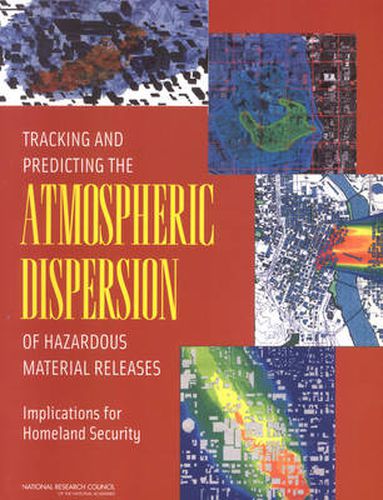Readings Newsletter
Become a Readings Member to make your shopping experience even easier.
Sign in or sign up for free!
You’re not far away from qualifying for FREE standard shipping within Australia
You’ve qualified for FREE standard shipping within Australia
The cart is loading…






For many years, communities have prepared themselves to deal with accidental atmospheric releases from industrial sites, energy facilities, and vehicles transporting hazardous materials. Today, these communities must also worry about the terrorist threat of the intentional use of chemical, biological, and nuclear (C/B/N) agents. Because of this threat, the ability to predict and track the dispersal of harmful agents has become a critical element of terrorism planning and response.
Our nation?s capacity to respond to atmospheric C/B/N events stands, like a three legged stool, on the strength of three interconnected elements: 1) dispersion models that predict the path and spread of the hazardous agent; 2) observations of the hazardous plume itself and of local meteorological conditions, which provide critical input for the models; and 3) interaction with emergency responders who use the information provided by the models.
As part of the National Academies continuing focus on issues of homeland security, Tracking and Predicting the Atmospheric Dispersion of Hazardous Material Releases examines our nation?s current capabilities in these three areas and provides recommendations for strengthening them.
$9.00 standard shipping within Australia
FREE standard shipping within Australia for orders over $100.00
Express & International shipping calculated at checkout
For many years, communities have prepared themselves to deal with accidental atmospheric releases from industrial sites, energy facilities, and vehicles transporting hazardous materials. Today, these communities must also worry about the terrorist threat of the intentional use of chemical, biological, and nuclear (C/B/N) agents. Because of this threat, the ability to predict and track the dispersal of harmful agents has become a critical element of terrorism planning and response.
Our nation?s capacity to respond to atmospheric C/B/N events stands, like a three legged stool, on the strength of three interconnected elements: 1) dispersion models that predict the path and spread of the hazardous agent; 2) observations of the hazardous plume itself and of local meteorological conditions, which provide critical input for the models; and 3) interaction with emergency responders who use the information provided by the models.
As part of the National Academies continuing focus on issues of homeland security, Tracking and Predicting the Atmospheric Dispersion of Hazardous Material Releases examines our nation?s current capabilities in these three areas and provides recommendations for strengthening them.